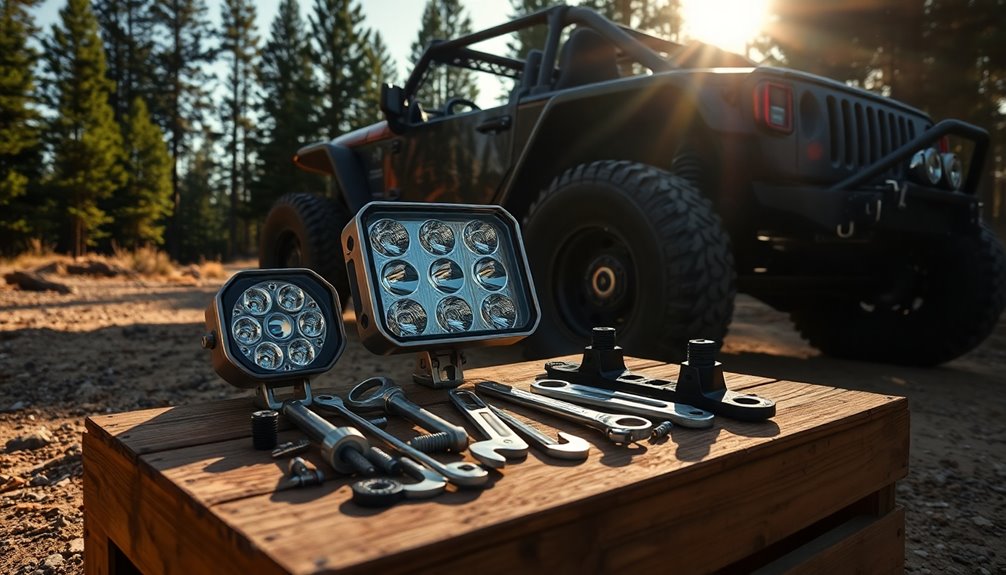Off-road diesel comes in two main types: Diesel #1 (D#1) and Diesel #2 (D#2). If you're operating in cold weather, D#1 is your best bet due to its lower viscosity, which reduces the risk of gelling. On the other hand, if you're dealing with heavy loads in warmer conditions, D#2 offers better energy efficiency and performance. Both types are dyed red for off-road use and must comply with ultra-low sulfur diesel (ULSD) standards. Knowing the right type can impact your equipment's performance. Keep exploring, and you'll uncover more essential details about off-road diesel.
Key Takeaways
- Off-road diesel includes two types: Diesel #1 (D#1) and Diesel #2 (D#2), each designed for different conditions and applications.
- D#1 is ideal for cold weather due to its lower viscosity and higher volatility, reducing gelling risks.
- D#2 is preferred for heavy-duty applications, offering better energy efficiency and performance in warmer climates.
- Both types must meet ultra-low sulfur diesel (ULSD) standards, containing less than 15 ppm sulfur.
- Off-road diesel is dyed red, while on-road diesel is clear or green, indicating its untaxed status for off-road use.
Characteristics of Off-Road Diesel
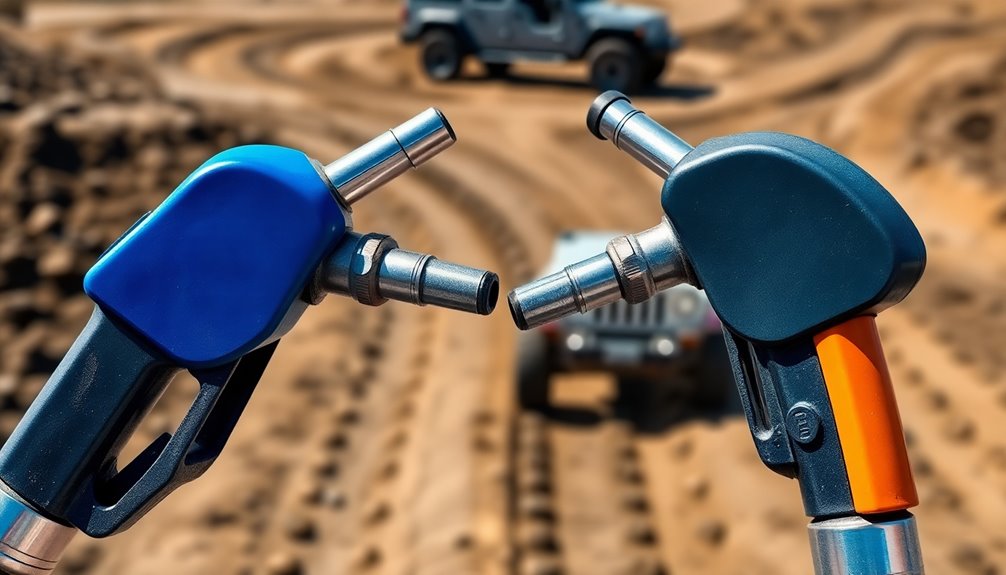
Off-road diesel comes in two main types: #1 and #2 fuel, each with distinct characteristics tailored for different applications. If you're operating in cold weather, you might lean towards #1 fuel. Its lower viscosity makes it less likely to gel, ensuring your machinery runs smoothly even in frigid conditions.
However, #2 fuel is the most commonly used off-road diesel, as it offers better energy efficiency and is better suited for heavy loads.
Both types often fall under the category of ultra-low sulfur diesel (ULSD), which contains less than 15 parts per million (ppm) sulfur, complying with modern engine requirements. You may also encounter red diesel, a dyed version specifically designed for off-road use, making it clear that it's untaxed and ideal for agricultural, construction, and heating applications.
When using off-road diesel, regular maintenance is essential. If you neglect this, you might find your fuel gelling in cold temperatures, leading to obstructed filters and compromised performance.
Understanding the viscosity and combustion characteristics of #1 and #2 fuels will help you make informed choices for your equipment's needs.
Legal Implications of Off-Road Diesel
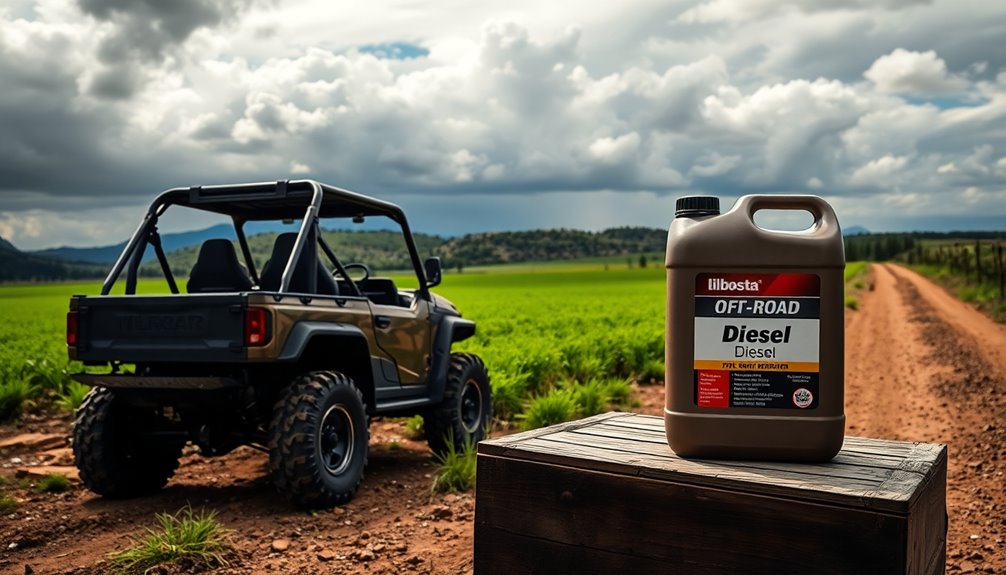
Using off-road diesel comes with specific legal implications that you should be aware of. This dyed diesel is designed for non-road applications, like agricultural use and construction machinery, and is exempt from fuel taxes. However, using it in on-road vehicles is illegal and can lead to hefty penalties.
In states like Oregon, fines can reach up to $10,000 for misuse, which underscores the significance of compliance with Federal regulations. Tax authorities actively monitor for the improper use of dyed diesel. They employ techniques like fuel sampling and black light detection to catch violations.
If you're using off-road diesel correctly, you won't incur tax liabilities, but any deviation from regulations can quickly lead to financial repercussions. Additionally, it's essential to guarantee that your off-road diesel meets specific fuel quality standards, including a low sulfur content of no more than 15 parts per million.
This requirement aligns with the standards for Ultra Low Sulfur Diesel (ULSD). Staying informed about these legal implications will help you avoid costly mistakes and guarantee that you use off-road diesel appropriately.
Types of Off-Road Diesel

When it comes to off-road diesel, you'll encounter two main types: Diesel #1 (D#1) and Diesel #2 (D#2). D#2 is the most commonly used because it's readily available and cost-effective for heavy-duty applications. However, D#1 has its advantages, particularly in cold weather operations.
Here's a quick comparison of the two types:
| Type | Characteristics |
|---|---|
| Diesel #1 | Lower viscosity, higher volatility; great for cold weather. |
| Diesel #2 | Better energy efficiency, higher performance in warmer conditions. |
Both types must meet ultra low sulfur diesel (ULSD) specifications, containing a maximum of 15 parts per million (ppm) sulfur. It's also important to note that off-road diesel is dyed red to indicate that it's untaxed and for non-road applications, distinguishing it from on-road diesel, which is clear or slightly green.
During winter months, blending D#1 and D#2 is common to prevent gelling, ensuring you get reliable performance regardless of the temperature. Understanding these types will help you choose the right off-road diesel for your needs!
Performance and Efficiency
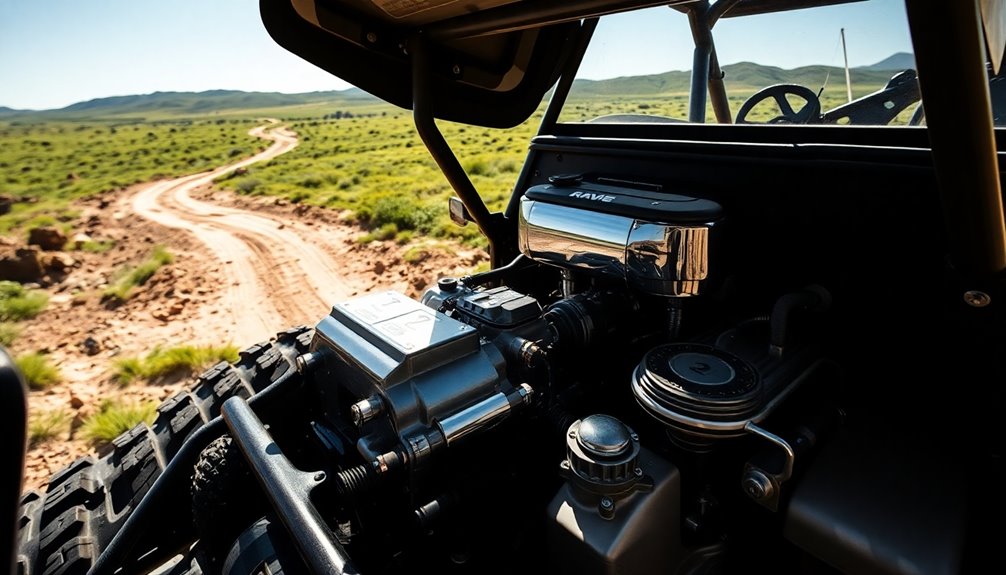
Choosing the right type of diesel can considerably impact your machinery's performance and efficiency.
When it comes to off-road diesel, Diesel #2 is often the go-to choice for heavy-duty applications due to its cost-effectiveness and superior performance under load. With a slower burn rate, Diesel #2 provides consistent power, making it ideal for construction and agricultural machinery.
However, Diesel #1 has its benefits, especially in colder temperatures where it's less likely to gel. If you're using Diesel #1, consider winter blends and additives to maintain ideal performance.
The cetane rating is another vital factor; Diesel #2 typically offers a higher cetane rating, which means easier ignition and better performance for heavy-duty tasks compared to Diesel #1.
To maximize your machinery's efficiency, regular monitoring of fuel quality is essential. Incorporating appropriate additives can enhance the overall performance of your off-road diesel, ensuring that your equipment runs smoothly and efficiently.
Ultimately, choosing the right diesel type tailored to your specific needs can lead to improved performance and efficiency in your operations.
Ordering Off-Road Diesel
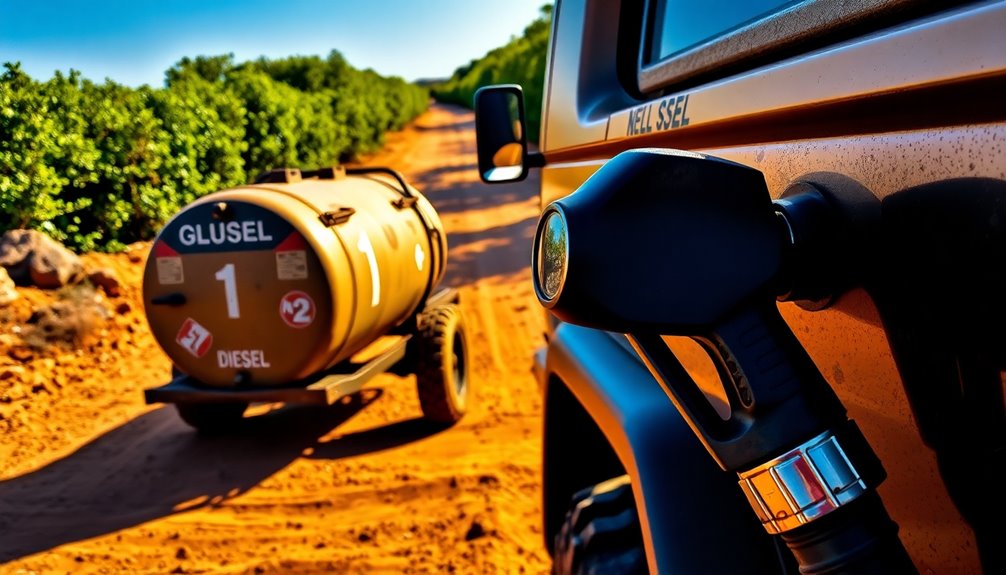
To get your off-road diesel ordered efficiently, start by setting up an account with a reliable fuel provider, like Star Oilco. This is essential for compliance with state regulations on fuel tracking. You'll usually have the option to complete credit applications or use a credit card for payment, depending on the supplier's policies.
Many fuel providers offer additional services, such as loaner tanks or keep-full service plans, guaranteeing you have a steady supply of off-road diesel for your job sites. Given that rural gas stations may have limited availability, it's often best to contact your chosen fuel provider directly to secure your fuel needs.
Establishing regular delivery schedules will help you maintain an uninterrupted supply of off-road diesel. Here's a quick reference table to help you understand your options:
| Service Type | Description | Benefits |
|---|---|---|
| Loaner Tanks | Temporary tank solutions | Guarantees consistent fuel supply |
| Delivery Schedules | Regular delivery intervals | Reduces downtime at job sites |
| Credit Applications | Flexible payment options | Simplifies purchasing process |
Frequently Asked Questions
Is Off-Road Diesel Number 1 or 2?
When you're considering off-road diesel, it's important to know that both Diesel #1 and #2 serve specific purposes.
Diesel #2 is often your go-to for heavy loads due to its efficiency, while Diesel #1 provides better performance in cold weather.
Depending on your equipment and the conditions you're working in, you might need to blend them or choose one over the other.
Always check your machinery's requirements before making a decision.
Should I Use #1 or #2 Diesel?
When deciding whether to use Diesel #1 or #2, consider your operational environment.
If you're working in extreme cold, Diesel #1's higher volatility can help prevent gelling, keeping your engine running smoothly.
However, for general use and heavy loads, Diesel #2 is more economical and widely available, making it the go-to choice for most off-road applications.
Assess your needs to choose the right diesel for your equipment's performance.
Is #2 Fuel Oil the Same as Off-Road Diesel?
Imagine your heavy machinery roaring to life, ready to tackle the toughest jobs. You might wonder if #2 fuel oil is the same as off-road diesel.
While they share similar properties, they're not identical. Off-road diesel is specifically dyed red for tax-exempt use and is designed for non-road applications.
Both fuels excel in high-performance settings, but remember: off-road diesel isn't meant for heating, unlike #2 fuel oil. Keep that in mind for your machines!
What Is NO.2 Diesel Used For?
No. 2 diesel is primarily used for heavy-duty vehicles, like trucks and buses, thanks to its cost-effectiveness and energy efficiency.
You'll find it powering construction equipment, agricultural machinery, and other off-road applications. Its higher viscosity and energy density make it ideal for long-distance driving and transporting heavy loads.
Plus, with a cetane rating of 40 to 42, it guarantees reliable ignition and combustion performance for most diesel engines you might encounter.
Conclusion
In conclusion, off-road diesel isn't just about choosing between #1 and #2; it's about understanding the unique characteristics and legal implications that come with it. While some might worry that using off-road diesel could harm their equipment, it's designed for heavy-duty performance, ensuring efficiency and longevity. By selecting the right type for your needs, you can maximize your machinery's potential while staying compliant with regulations. So, don't hesitate—make the informed choice for your off-road operations!


